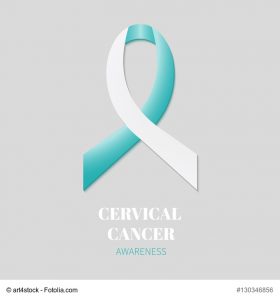40 years ago, cervical cancer was the leading cause of cancer death in American women. Since then, the number of deaths has significantly decreased due to increased awareness of the symptoms and testing methods for this disease.
Important Cervical Cancer Statistics
 Although the numbers have improved, approximately 12,000 women will be diagnosed and 4,120 will die from cervical cancer this year. These numbers show the dangers that cervical cancer can pose and the importance of early detection through regular screenings.
Although the numbers have improved, approximately 12,000 women will be diagnosed and 4,120 will die from cervical cancer this year. These numbers show the dangers that cervical cancer can pose and the importance of early detection through regular screenings.
- The overall 5 year survival rate is 68%.
- The overall 10 year survival rate is 64%
- Early-stage 5 year survival rate is 92%. (Early stage cervical cancer is defined by the cancer only being present on the cervix.)
- Mid-stage 5 year survival rate drops to 57%. (Mid-stage cervical cancer occurs when the cancer has spread to tissue near the cervix.)
- Advanced-stage 5 year survival rate dramatically decreases to 17%. This happens when the cancer has spread to distant parts of the body.
Since there is such a dramatic decrease in the survival rate as the cancer progresses, women must be proactive and take the necessary steps to catch the problem and seek treatment before the issue develops further.
Prevention & Early Detection
There are two powerful tools that women should use in the fight against cervical cancer:
HPV Vaccination
The Human Papillomavirus (HPV) is the most sexually transmitted disease in the United States. In fact, it is estimated that approximately 90% of men and 80% of women who are sexually active have at least one type of HPV. Of these types of HPV, two are responsible for approximately 70% of all cases of cervical cancer.
HPV vaccinations have been found to provide nearly 100% protection against the two HPV types that can cause cervical cancer (types 16 and 18. The vaccine can be given at any age, but if a person has been sexually active, there is a chance that they’re already infected. Ideally, the vaccine will be administered before a person becomes sexually active.
Pap Tests
Typically performed on women aged 21 to 65, the pap test allows the doctor to look for changes in cervical tissue that can potentially turn cancerous. The doctor will examine the vagina and cervix and collect samples of any abnormal tissue. The tissue will then be sent to the laboratory for testing.
Symptoms of Cervical Cancer
Although women rarely exhibit symptoms of cervical cancer in its early stages, it is important to understand the warning signs. The most common symptoms include:
- Irregular bleeding. This may occur between periods and after sexual intercourse. Irregular bleeding is especially worrisome in postmenopausal women and could indicate a serious problem.
- Vaginal discharge. Discharge that is white, clear, brown or tinged with blood could be an additional warning sign.
The symptoms listed above are somewhat common and can be caused by issues other than cervical cancer. But there are some warning signs of advanced-stage cervical cancer:
- Back pain
- Pelvic pain
- Difficulty urinating
- Swelling of the legs
- Weight loss
- Fatigue
Follow us on Facebook and Twitter for more information about women’s health.
